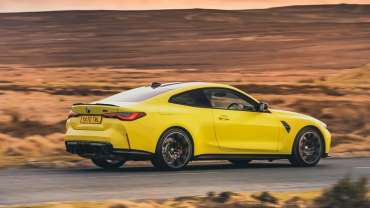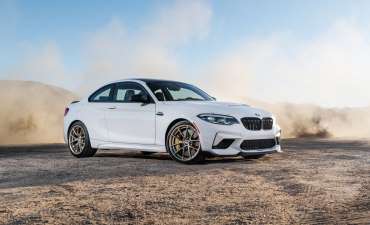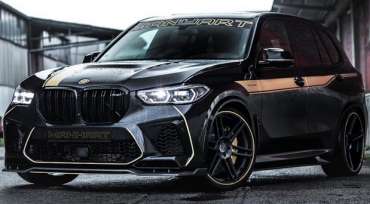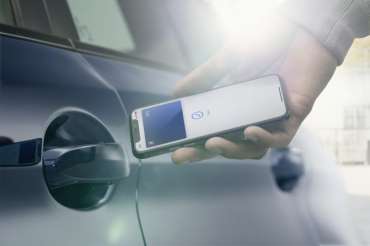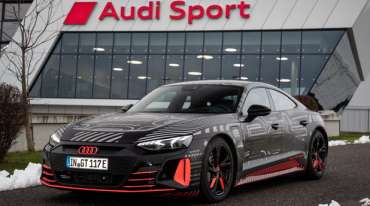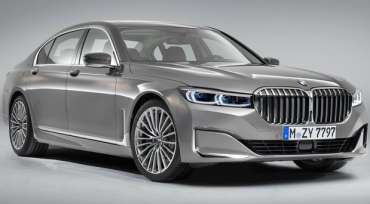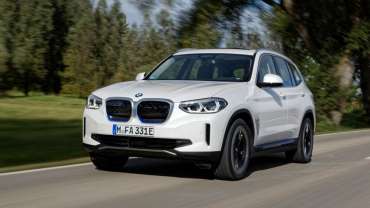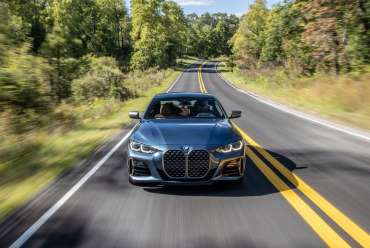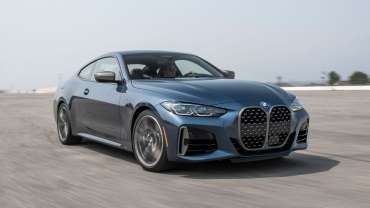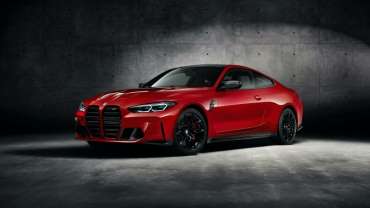Displaying items by tag: BMW
BMW M4 Competition review
If someone had have told you twenty years ago that the latest BMW M4 (or M3, as it was universally called back then) would have over 500bhp, a choice of all-wheel drive – but no manual gearbox – and styling loud enough to send seasoned M enthusiasts off into the arms of AMG, you’d no doubt wonder what potent blend of super glue they’d been inhaling before bed.
Yet, here we are in 2021 where the crazy proclamations of yesteryear have indeed come true. The G82 version of one of BMW’s most famous names is all of the above. Granted, a six-speed three-pedal version is available elsewhere, but on these shores it’s eight-speed ZF only. And yes, the debate over the styling still rages on. I’ve grown to like it, chiefly because it dares to be different from every copy and paste vanilla car on sale today. But let’s not go down that rabbit hole…
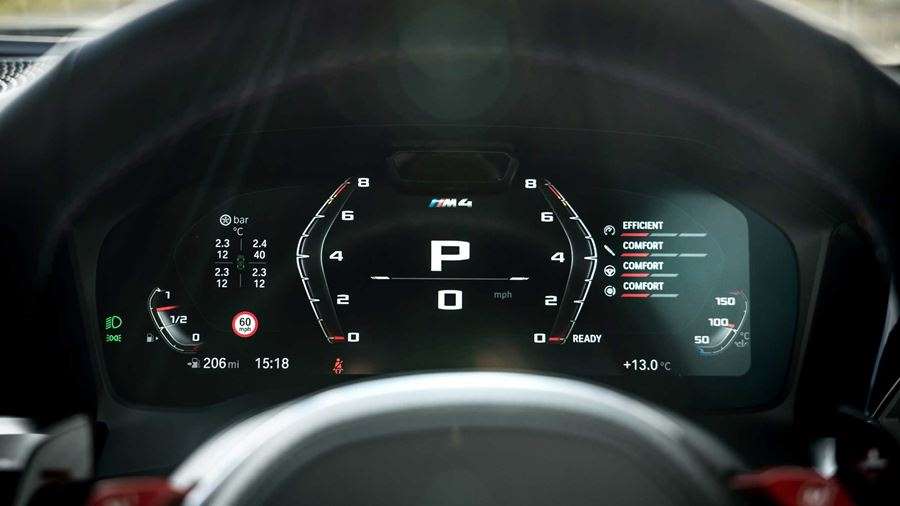
What are the headline figures?
As well as the manual gearbox, UK buyers have also been denied the ‘standard’ car, so it’s Competition only for the G82 and its M3 sibling. That means pre-pumped outputs of 503bhp and 479lb ft of torque – up 59bhp and 73lb ft on the outgoing F82 Competition. Big gains? Quite. But also big dollar, with this latest M4 coming in with a £76,000 asking price (our test car was knocking on for £90k).
0-62mph is done in 3.9 seconds while top speed hits the heady heights of 180mph if you pay the nice people in Munich a little extra for the M Sport Pro Package. It’s a seriously juicy set of stats for a game of Top Trumps, yet the truth is that we’ve come to expect nothing less when one of Germany’s big three releases a flagship performance car.
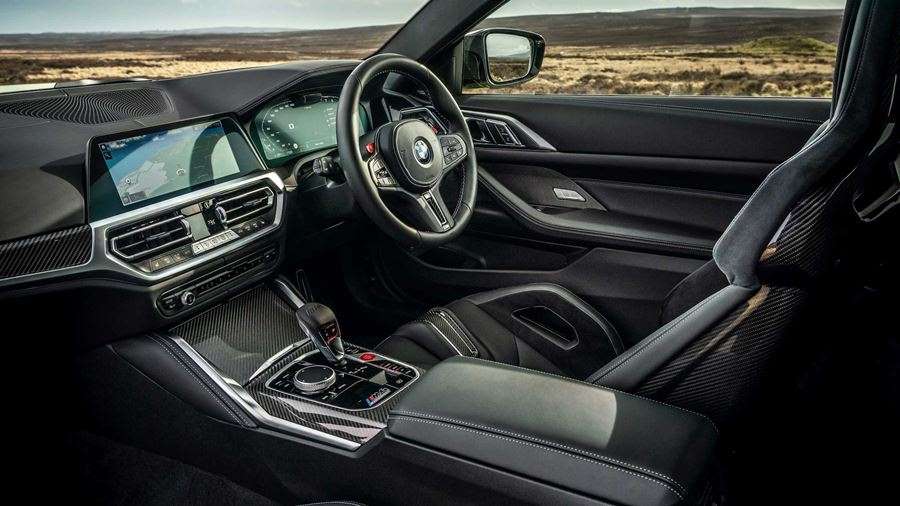
What’s of more importance, is how this M4 serves its power up compared with its predecessor. There’s plenty of tales from drivers who got behind the wheel of early F82s, likening the experience to driving a 400bhp supermarket trolly. You were never quite sure what it was going to do next and as a result, it felt like it was trying to spit you off into the nearest hedge.
Happily, things have since moved forward and BMW’s engineers have smoothed out the torque delivery in the S58 engine. It comes in from almost 1,000 revs later, and there’s a far more linear curve as it hauls through the mid-range leaving Porsche 911 Carreras in its wake. Catch it below 2,500rpm and you’ll detect tangible lag, yet it’s fleeting and insignificant compared with the sheer breadth of pulling power on offer.
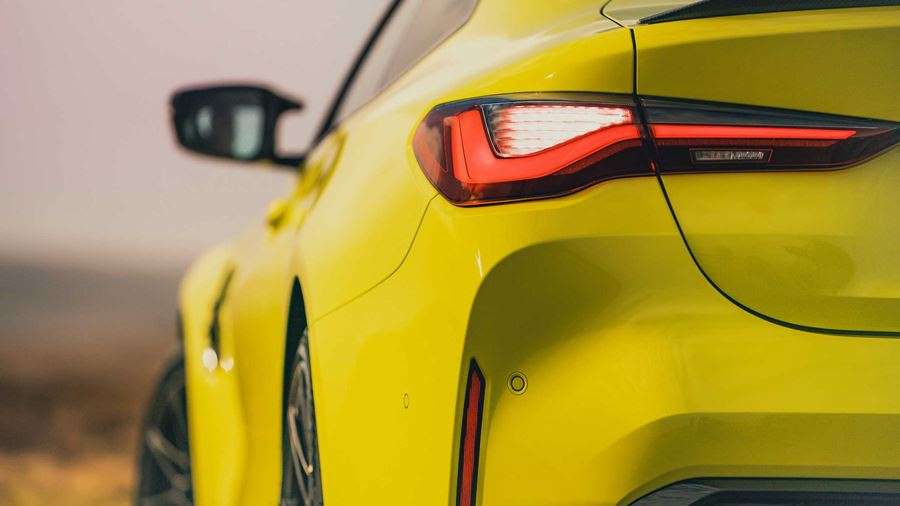
It’s a level of flexibility that would scarcely have been believable not so long ago, yet the M4’s engine delivers at both ends of the scale. Almost as soon as the torque dies down, the endearingly frantic top end takes over and gives you just enough encouragement to ring out those final few revs before pulling the upshift paddle at 7,600rpm. If it wasn’t already clear, this is a blisteringly quick car.
BMW’s done a decent job with the sound, too. No doubt it’s synthesised, yet there’s enough going on, not just from the electronically controlled exhaust flaps, but the engine itself, to mean it should be slightly less controversial than the tones of its S55 predecessor.
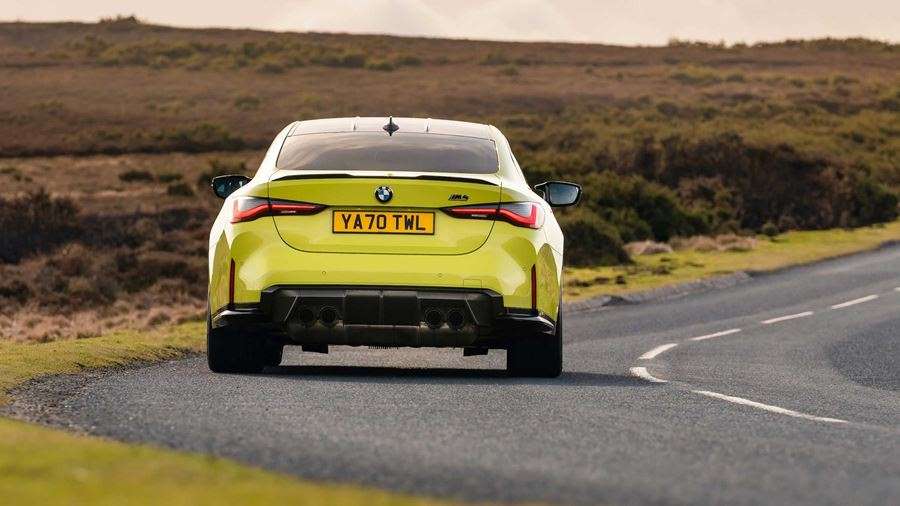
It’s a real shame, then, that the eight-speed gearbox can’t doesn’t feel as confident as the rest of the powertrain. Everyday driving shows off its greatest strength of smooth, slick, well-timed changes, yet start to drive enthusiastically and the downshifts are underwhelming. There’s not the same level of decisiveness or aggression as Porsche’s PDK, for example, and despite the number of ratios being the same, each gear feels less distinctive.
What about the handling?
Before I get into that, it’s worth highlighting that most of my time in the M4 was spent on track with the optional Michelin Pilot Sport Cup 2 tyres, rather than the standard Pilot Sport 4S. I did have an on-road drive with the latter, but the following impressions will – largely – be based on my experience with the super sticky track tyres.
Although, a quick glance through the spec sheet and you might question whether the M4 Competition should be going anywhere near a track. Because, under the colossal power and torque figures you’ll see a kerb weight in excess of 1.7-tonnes, that, by the way, is almost 200kg more than a similarly specced F82 M4 Competition
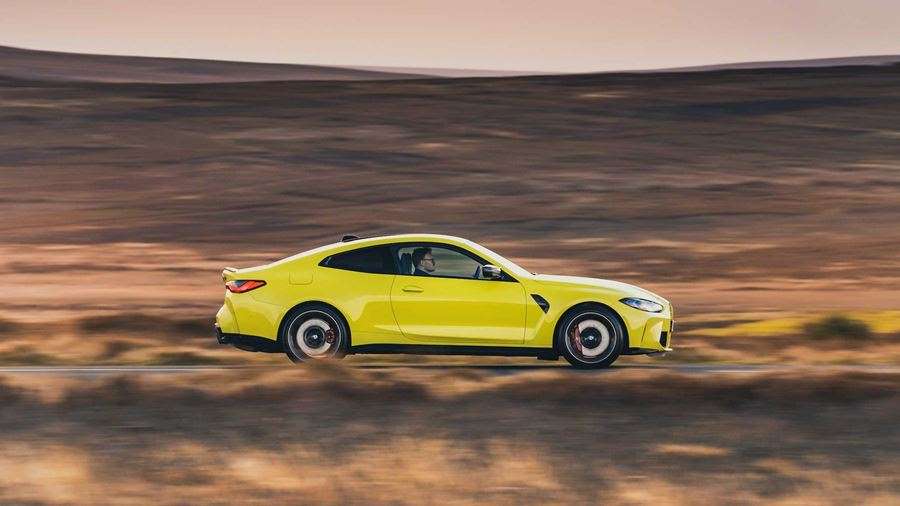
Why so hefty? Partly, it’s down to the increased reinforcement on the part-steel, part-aluminium CLAR platform. Braces to lock the front shock towers firmly to each other and the front bulkhead, elements to tie the stiffer subframe to the reinforced engine bay, underfloor shear panels – all of this in an effort to remove variables from the M4’s chassis.
And yet in truth, such weight gains feel like they’re there mostly because BMW knows it’s not the stigma it once was and that the average M4 customer still wants, no – scratch that, demands the creature comforts of a regular 4 regardless of the car’s sporting intentions. As a consequence, BMW has become the master of making its cars not necessarily hide weight (there’s only so far you can take that), but instead, work with the weight.
Like the F90 M5, the M4 Competition moves around tight corners on track (and on road), with a degree of agility that, not so long ago, wouldn’t have been out of place on the grid for the Nürburgring 24H. Wider, longer and tauter than its predecessor, it can take even greater speed into corners with the front-end that actively hunting down apexes given a little trail-braking encouragement. BMW’s engineers benchmarked the car against the previous M4 CS – and it shows.
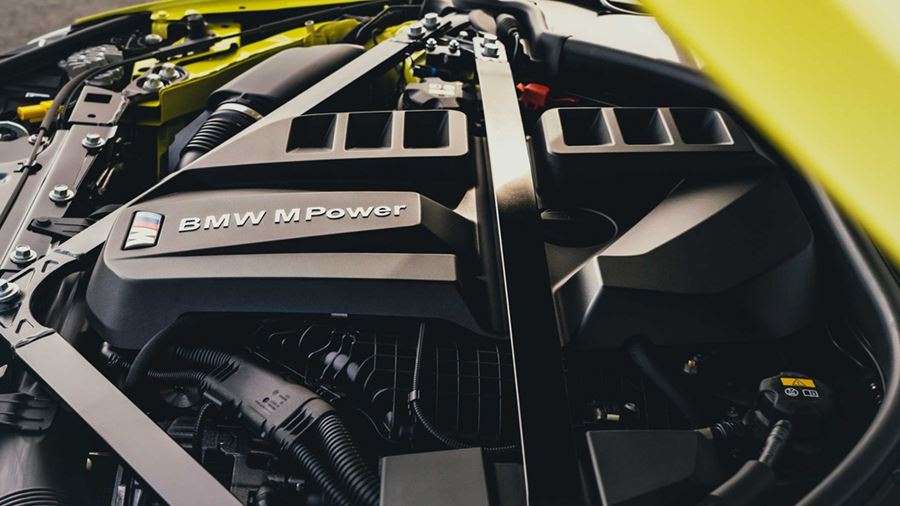
It’s especially effective in tight and medium-speed corners where there’s enough attitude from the rear to punch you away from the throes of understeer, keeping the line tight and the speed high. Sure, the front will still push wide if you’re not decisive enough on the throttle, but it doesn’t take long to get used to its pleasingly direct way of doing things.
And yet, that doesn’t mean that the M4 always plays nice. As mentioned, the engine is a much more tractable unit than before, but there’s still a sharpness, borderline nervouness to the car at the limit, that hints at the barely concealed aggression underneath. Big slides are possible – even encouraged – with the gimmicky but fun M Drift Analyser, yet it’s the transition from traction to no traction that leaves you a little unsure of where you stand. Although, as explained, much of this could have been down to the less forgiving Cup 2 tyres.
Either way, there’s no doubt more precise tools available for similar money. And while I don’t want to get too fixated on the 911, it certainly is one of them. The steering in the BMW, for example, is light and fast. Handy for the slower corners, but less helpful for delivering feel and stability in the faster stuff. Plus, the standard brakes, as powerful as they are still have their work cut out to bring 1.7 tonnes to a halt in a brisk and controlled manner. As a result, the M4 Competition is a car that’ll make you sweat, swear and question your own sense of self-preservation on a committed drive.
Which makes it all the more impressive that its capable of settling down into an exemplary everyday car with almost GT levels of refinement. The adaptive M suspension with electronically controlled dampers does a fine job of keeping the car level in sport plus settings, but the well-rounded ride in comfort mode is equally impressive.
As is the cabin layout, infotainment and optional Clubsport carbon bucket seats. A £3,000 option, they save a mere 9.6kg, yet sit you lower and more comfortably in the car. Admittedly, I still wanted to go down a few mms further, and if I’m being picky, the steering wheel rim is too thick. Yet there’s no doubt it’s an exceptionally nice cabin to spend time in.
Verdict
The BMW M4 Compeition manages to be both an accomplished all-rounder and a flawed, yet brilliantly exciting sports coupe all at the same time. It’s everyday on-road manners and luxuriously appointed cabin are almost beyond reproach. Yet start to press on the and the wave of seemingly limitless power and torque, combined with a veracious appetite for on-the-limit brinkmanship makes it a heart-stopping streetfighter of a sports coupe. And while it may not have the dynamic finesse of the 911 that its now priced so closely with, there’s more than enough reason to drop £80k on one of Munich’s most radical and controversial M cars yet.
Tested: BMW M2 CS Hangs in There
A pricey special-edition M2 with a 444-hp heart reminds us of the BMWs of the past.
Taglines work. Take, for example, the incredible motivational power of a "Hang in There" cat poster or the decades that BMW marketed itself as The Ultimate Driving Machine. In those days, BMW's cars regularly delivered class-leading handling and fun. In 2006, the German brand dropped the tagline and began a slow move away from cars that sing and dance. But the company still has a few, such as the M2 CS, that are hanging in there, clinging to the branches of the old family tree.
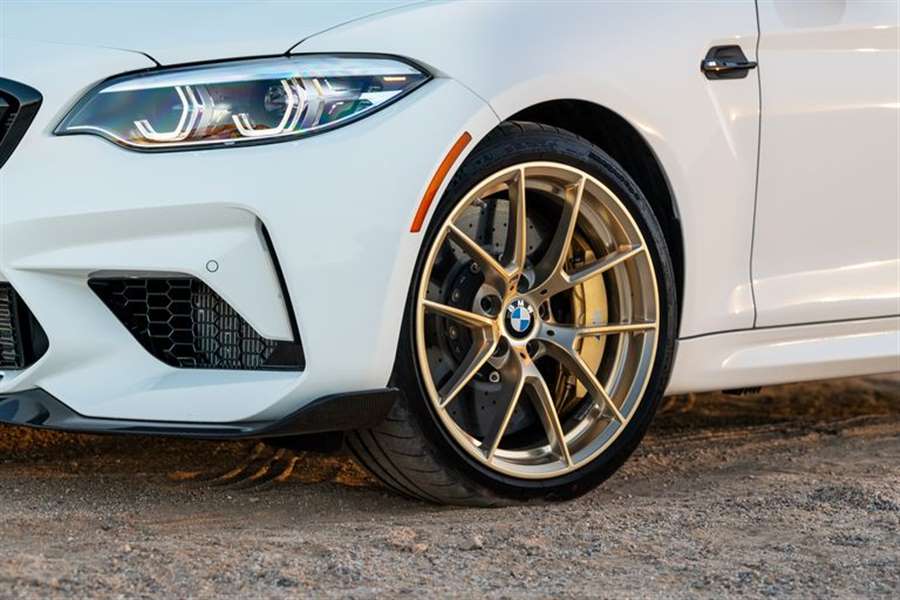
The M2 CS is a limited-edition, high-powered version of the M2, which is itself the hot version of the 2-series coupe. We're talking the rear-wheel-drive 2-series, not the front-drive-based, four-door 2-series Gran Coupe abomination that placed last in a recent comparison test and is best thought of as an ultimate disappointment. Thankfully, the M2 CS has nothing in common with that car.
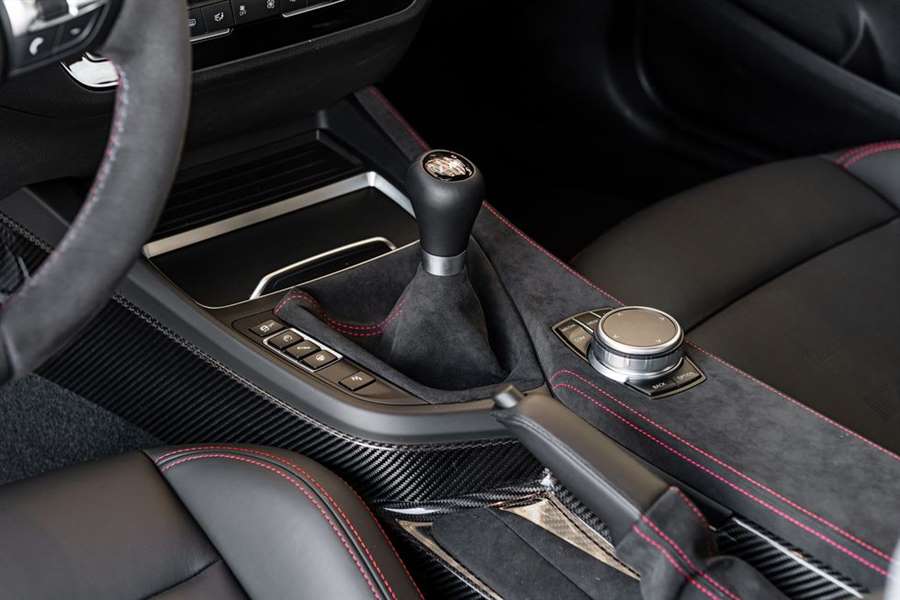
It does, however, share some parts with the outgoing Competition-spec M3 and M4, including the 444-hp version of the M division's twin-turbo 3.0-liter inline-six. Despite being a healthy 39 horses up on the M2 Competition, the CS isn't any quicker than its sibling to relatively low-speed thresholds. Basically, it is limited in the run to 60 mph by the traction of its rear tires. But the CS pushes ahead after hitting 60 mph in 3.9 seconds, and it passes through the quarter in 12.1 seconds at 120 mph, two-tenths of a second quicker and 4 mph faster than the stick-shift M2 Comp.
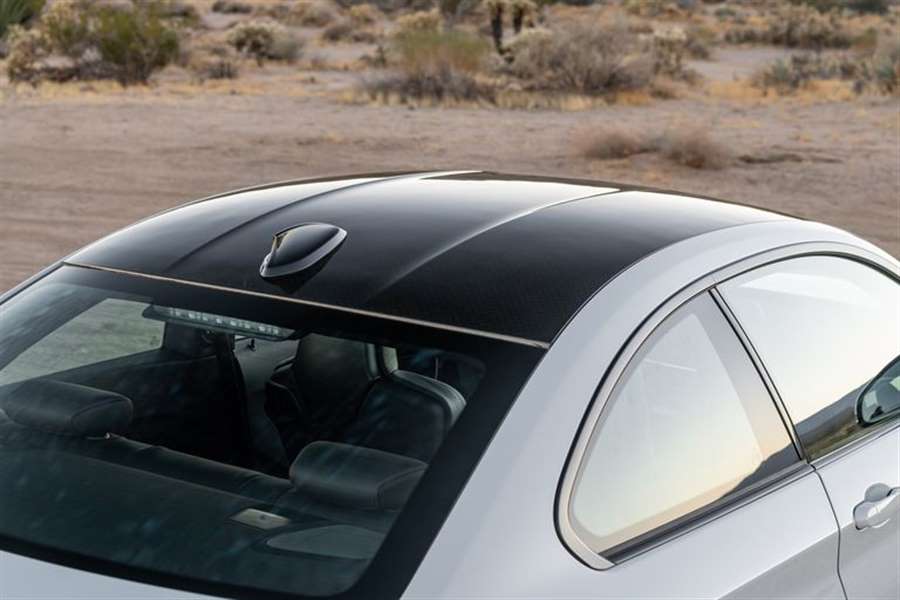
With its six-speed manual transmission, the CS pulls us in close. If you're lazy, it'll rev match on downshifts, and the shifter has the positive, if slightly rubbery, motion of BMWs past. Optional matte-gold wheels shod with Michelin Pilot Sport Cup 2 track rubber are part of the CS makeover. A test-equipment snafu cost us our skidpad measurement, but by the seat-of-pants measurement this car has more grip than the 1.00 g we measured in an M2 Competition riding on Michelin Pilot Super Sports. We promise.
Highs: An angry car designed to make us smile, manual-transmission joy, BMW's best stuff.
Those grippy Cup 2 tires probably deserve some credit for removing a lot of numbness from the M2's steering. While you can't quite read the Braille of the pavement through the Alcantara-wrapped wheel, the steering feedback is livelier than we've seen in recent BMWs. Adaptive dampers, similar to those found on the previous-generation M3 and M4, are available for the first time on the M2 and offer three modes. The Comfort setting works brilliantly on canyon roads (and probably even on racetracks), stiffening the damping as needed. Notching up to the harsher settings fails to improve handling and makes the ride punishingly firm.
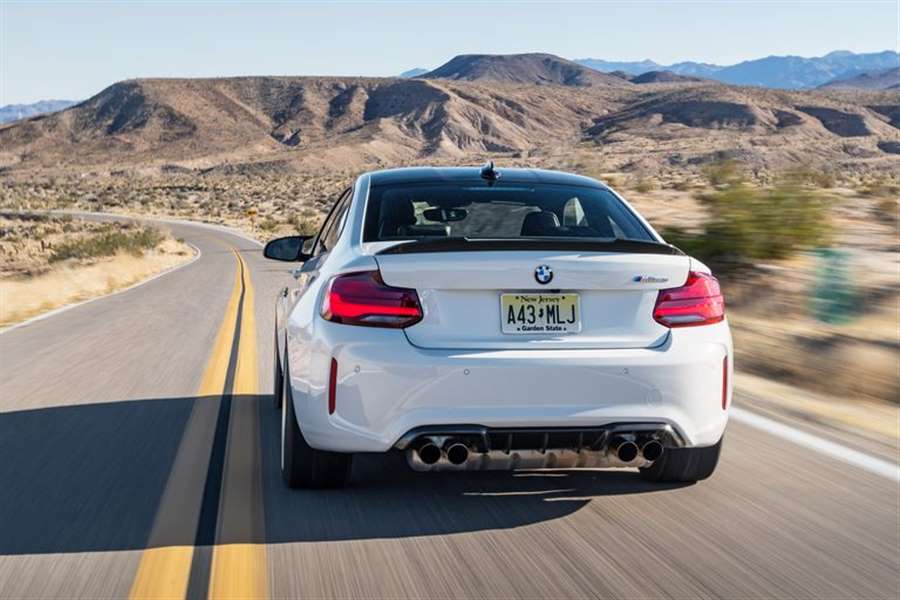
Carbon-ceramic brake rotors are an $8500 option and proved to be up to the abuse leveled at them during testing and on the road. In addition to fade resistance, an added benefit of the ceramic rotors is that they won't leave brake dust on the lovely gold wheels. Fearless prediction: When it comes to wheels, gold is the new black. The brake pedal is a little softer than we like when used casually, but work the brakes hard and there's nothing to complain about. Stopping from 70 mph took a short 145 feet, and hauling down from 100 mph required 301 feet.
An M2 CS on a mountain road is a happy place. There's a slight lag when you hit the accelerator on corner exit, as the turbochargers need a moment to spin up. To ensure sharp engine responses, old M cars were naturally aspirated and fitted with individual throttle bodies, but none of them made torque like modern turbocharged engines do. The CS produces 406 pound-feet of torque at a low 2350 rpm.
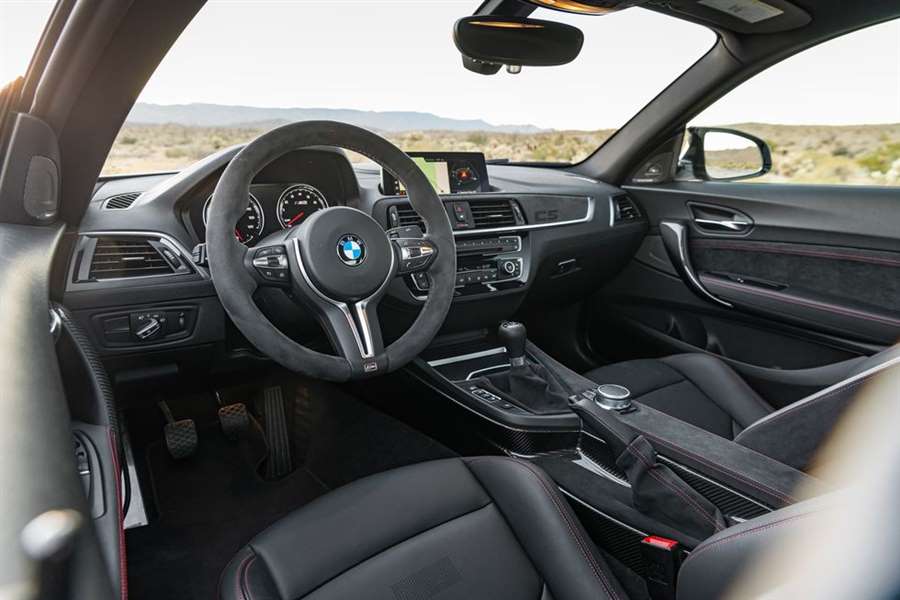
Lows: Some turbo lag, pushing six figures is pushing it.
Other parts shared with the old M3/M4 include the deeply bolstered front seats and the Alcantara-wrapped steering wheel. Rear-seat space is tight, and there are only two seatbelts back there, making this a four-seater. Carbon-fiber and more Alcantara trim dress up this aging interior, and much of the switchgear appears to be from BMWs of the past, but we're totally okay with that. The infotainment system features BMW's latest software, and Apple CarPlay is included.
A carbon-fiber hood and roof help the CS weigh 83 pounds less than the M2 Competition. Pushed to its lofty cornering limits, the CS acts even lighter and smaller than its 3489 pounds. Our main problem with this astonishingly good car is its $84,595 starting price. The letters CS cost more than SS 1LE, ZL1, ZL1 1LE, GT PPL2, and GT500. Those exotic Camaros and Mustangs offer more power and the same connected driving experience, but the M2 is smaller, lighter, and undeniably special in its own right. It's one of the last true BMWs. We just hope the engineers responsible have a particular cat poster in their offices.
Manhart BMW X5 M with 823HP
German Manhart now offers the owners of the BMW X5 M Competition a new tuning program.
Manhart’s package to modify the BMW X5 M Competition primarily implies that the 4.4-liter V8 TwinPower Turbo engine is boosted from 625hp and 750 Nm to 823hp and 1080 Nm of torque.
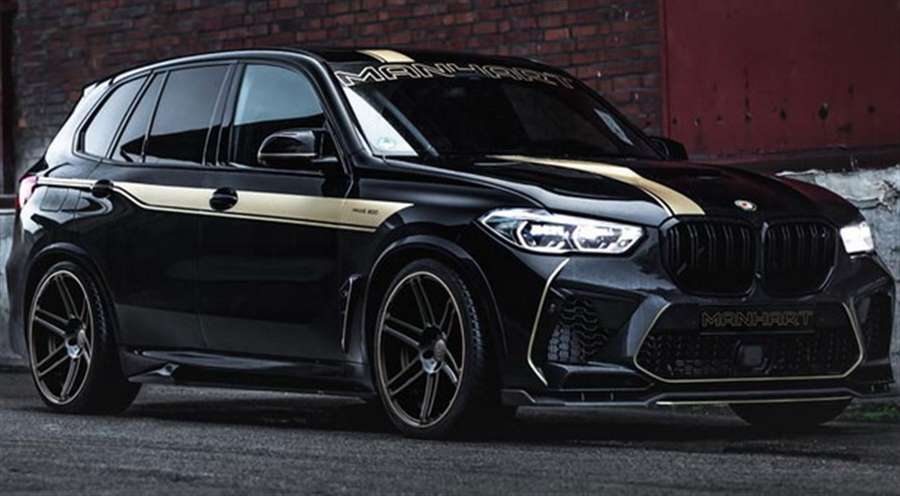
The Manhart package also includes carbon fiber elements, a stainless steel sports exhaust system, a set of new 22-inch wheels, stronger brakes, modified suspension (the car is 30 mm lower), as well as gold details, Manhart emblems and a refined interior. alcantara, carbon fiber elements).
Manhart does not state data on acceleration to 100 km / h, so here is a reminder that the serial X5 M Competiton needs 3.8 seconds for that.
The same package will be offered for the BMW X6 M Comeptition.
Smartphones will soon replace car keys
Although it is not news that the car is unlocked with a mobile phone, although only from close range, there is now a new technology on Wednesday that will allow us to do it remotely, as we normally do with keys.
Among the many things that smartphones have "suffocated" or at least pushed into the background, such as MP3 players, digital cameras, GPS devices and bank cards, we will soon add another to this list that we use every day - car keys .
Although mobile phone unlock technology is already in use, it is NFC-based, which means you have to lean the phone against the vehicle, but thanks to another technology (UWB), cars will unlock phones remotely, as they do now we work with keys.
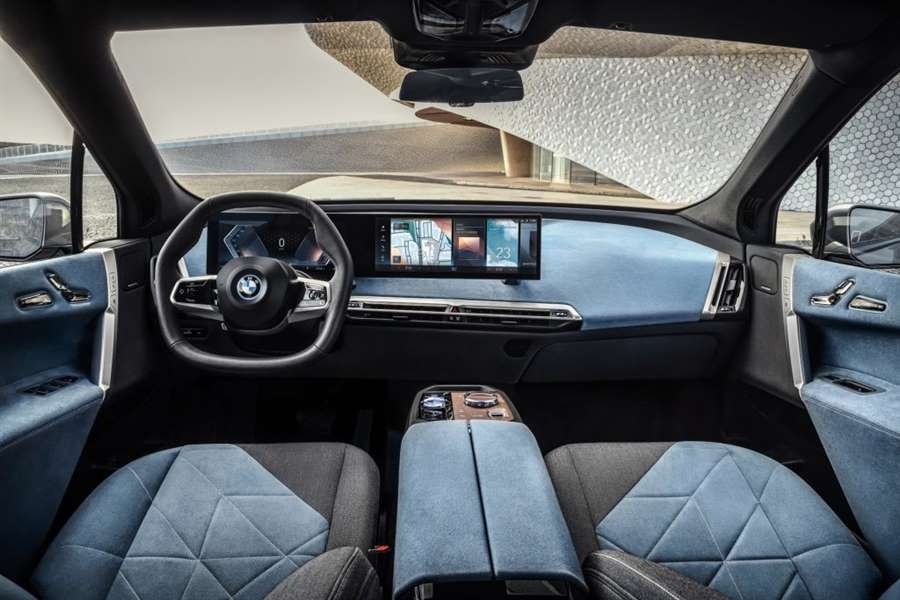
BMW iX, Photo: Promo
New models of Apple phones come with this technology, so BMW recently announced that UWB will use it on its new iX series electric vehicles.
The principle on which UWB works is best described on Wired, calling it "bluetooth on steroids", while Apple calls it internal GPS.
It is a short-range radio technology that will enable not only wireless communication with other devices, for example. unlocking the car door remotely, but also finding other devices nearby, similar to how devices like Tile's popular locators do.
Apple is not the only mobile company whose phones have UWB support - Samsung recently announced the Galaxy S21 series, which also implements this technology, and even before that, Xiaomi in the Mi10 series.
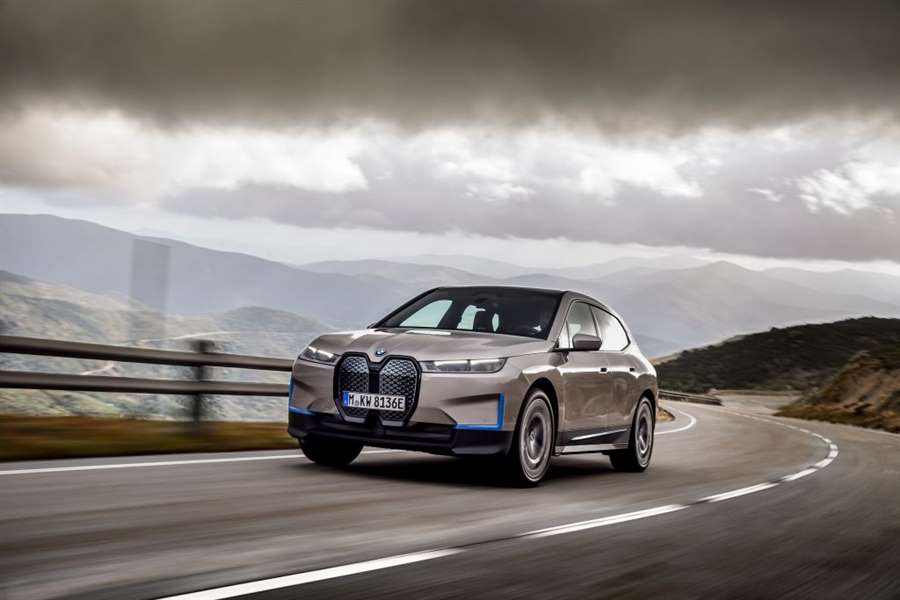
BMW iX, Photo: Promo
It seems like this is just the beginning because, according to information from the mobile industry, more and more companies are planning to introduce a phone with UWB support. So this year we can expect new Xiaomi phones with UWB support, but such devices are also being prepared by Oppo, Vivo and other companies, which means that many phones of the future will be able to replace car keys.
Of course, in addition to mobile manufacturers, UWB should also be accepted by car manufacturers. BMW has already confirmed this, and Samsung has announced that it is also cooperating with Audi, Ford and Genesis, so it is not difficult to assume that in the (near or distant) future, support for digital keys could become an industry standard.
Audi will phase out internal combustion engines by 2040, what about BMW?
Another Bavarian brand is currently working on several purely electric models that will debut in the next 10 years. However, the ambitions of the producers from Ingolstadt are much bigger. According to the head of the company, Marcus Disman, Audi plans to become purely "electric" in the next 20 years.
In fact, it is a time frame that is conceived as necessary to complete the transition, write Vrele Gume. According to Disman, Audi is currently setting a deadline for the phasing out of current models with internal combustion engines. The cars in question will either become purely electric or will be euthanized.
By the end of 2021, the Ingolstadt brand will have six purely electric models on offer, along with 12 plug-in hybrids. However, that is just the beginning. Audi wants to have twenty electric cars on sale by 2025, and if it succeeds in achieving that, it could become a manufacturer like Tesla sooner rather than later.
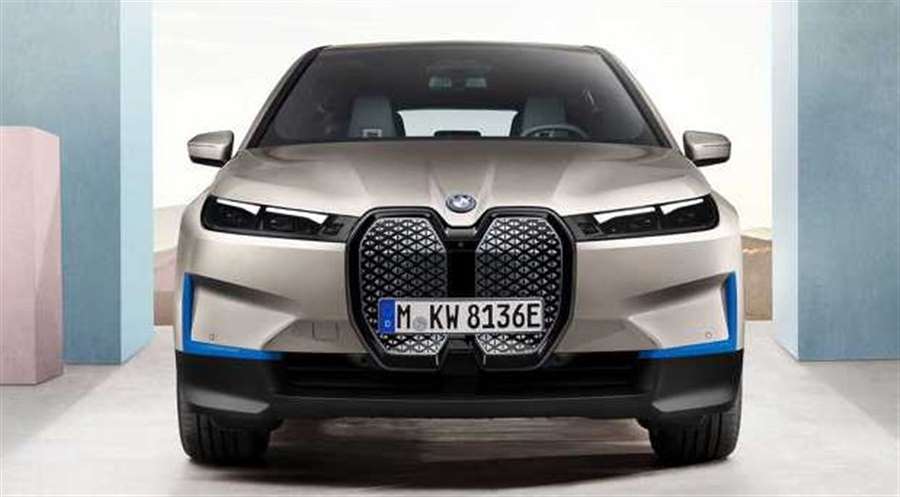
However, it should not be forgotten that Ingolstadt announced that they will continue to develop internal combustion engines, in an attempt to make them as efficient as possible. So, regardless of the fact that Audi will start phasing out the SUS engine, petrol engines will still have their place in the portfolio. "Plug-in" hybrids are likely to serve as long-distance models, giving customers who frequently travel hundreds of miles "from the train" the opportunity to own usable vehicles. Those who are not outspoken "long-distance runners" will be able to rely on electric cars. At the moment, there are only four different electric models of Audi on offer, with two being actually model variants. The Audi e-tron, e-tron Sportback, e-tron S and e-tron Sportback S are currently the only ones of their kind in the Ingolstadt range. However, by the end of the year, the Audi e-tron GT and Audi Q4 e-tron will enter the scene, with probably a couple of new "plug-in" hybrids.
Given all the above, the goal of the "four rings" brand to become purely electric in the next 20 years is not so unattainable. Will other premium manufacturers follow this matrix?
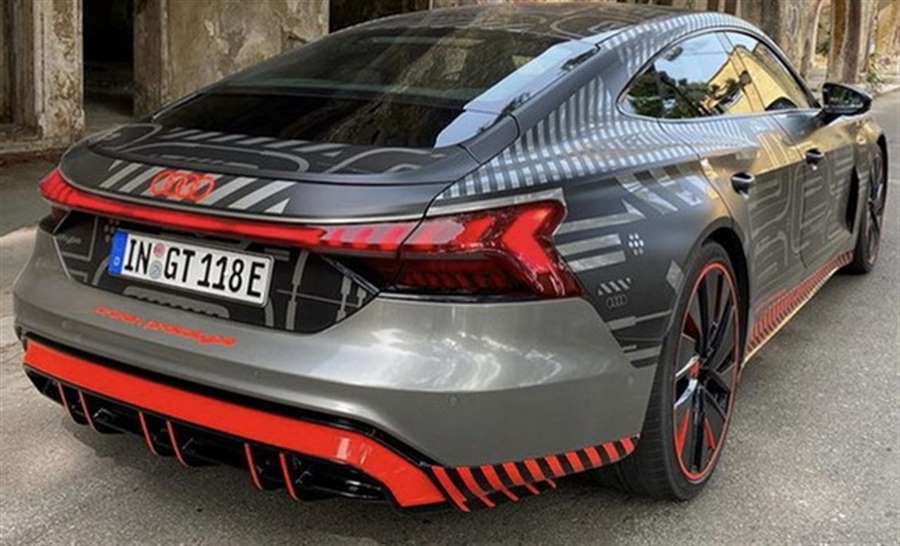
BMW also has ambitious plans when it comes to electrifying its models, although it seems that the latter has arrived "at the party". The BMW iX is the first true electric car from the Bavarian manufacturer since the i3, and it is not yet officially on sale. Although Audi’s e-tron models on the market rest on existing platforms, they are not just electrified versions of existing models, as is the case with the BMW iX3. The same can be said for the Mercedes-Benz EQC. Of course, Munich also plans to fill the electric offer in the near future, including the i4, the electrified series 7, the iX1 and possibly even the electric M5. BMW also wants to phase out internal combustion engines, although the deadline for achieving that process could be slightly longer than Audi's.
Sales of the BMW Group in 2020
The BMW Group also published sales data during 2020. The data show that the placement of the BMW, MINI and Rolls-Royce brands last year amounted to 2,324,809 vehicles, which is a decrease of 8.4 percent compared to 2019.
BMW itself sold 2,028,659 cars (minus 7.2 percent), MINI ended the year with sales of 292,394 vehicles (minus 15.8 percent), and Rolls-Royce sold 3,756 luxury cars with sales down 26 , 4 percent).
In terms of sales by region, the BMW Group sold 912,621 vehicles (minus 15.7 percent) in Europe, 984,515 (plus 6.1 percent) in Asia, and 306,870 vehicles (minus 18.0 percent) in the United States. In Asia, the largest sales were, of course, in China, where the BMW Group found 777,379 customers (sales growth was 7.4 percent).
The statement also points out that the BMW M sold 144,218 cars in 2020 (plus 5.9 percent compared to 2019), and that sales of electric and plug-in hybrid models (BMW i, BMW iPerformance and MINI Electric) amounted to 192,646 units (plus 31.8 percent).
Finally, the fact that BMW Motorrad sold 169,272 motorcycles last year (minus 3.4 percent).
Autoblog.rs
BMW iX3 SUV review
"The BMW iX3 is an electric variant of the popular X3 with a 285-mile range"
While BMW wowed the world with its i3 electric hatchback and i8 plug-in hybrid coupe, the all-electric BMW iX3 SUV is altogether a more staid proposition. This time round BMW is taking a similar approach to Peugeot and Hyundai by serving up an electric version of a car it already sells, namely the BMW X3.
There's been a deliberate decision not to go radical with the design, with BMW instead opting to add aerodynamic wheels, blue trim accents and a smoothed-off grille. There are also a new set of bumpers and side skirts, all tested to ensure they are slippery enough to help maximise the driving range. This is really just an X3 for buyers who want an electric powertrain.
Best electric SUVs
Under the car's floor is an 80kWh battery that sends its power to a rear-mounted 282bhp electric motor. This is a departure from rivals like the Audi e-tron, Jaguar I-Pace and Mercedes EQC, which all have two motors, four wheel drive and quite a bit more power. While it isn't as fast as them, the iX3's 285-mile range is competitive, beating both its German rivals and just slightly behind the I-Pace. The Jag’ struggles to hit its official figure in real-world driving anyway.
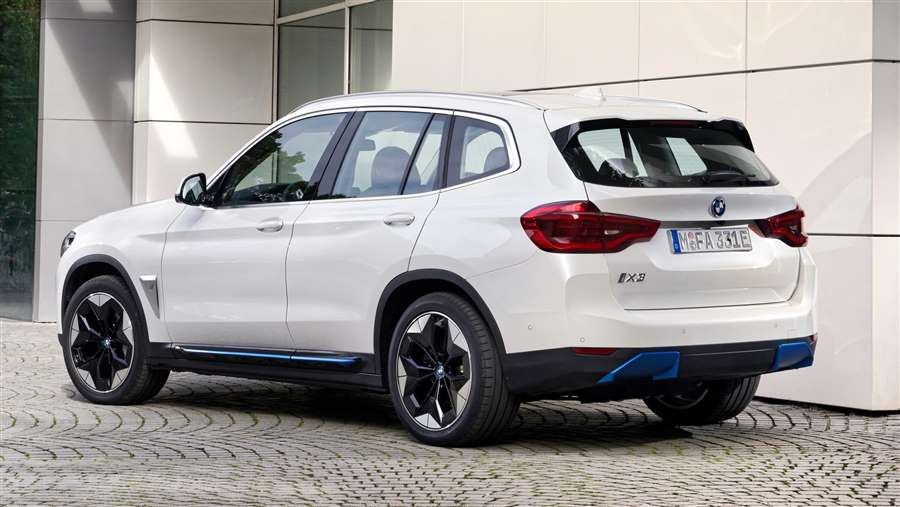
It can also be charged quickly, obtaining speeds of up to 150kW at the latest rapid-charging stations. Of its closest rivals, only the e-tron can match this, with the others topping out at around 100kW, and it means the iX3 battery can be replenished to 80% in a speedy 34 minutes. Thanks to this capability, making one stop on a long journey should be ample to get drivers to their destination with range to spare.
Like the exterior, the inside of the iX3 is very much a mild variation on the X3, with some flashes of blue trim to show this is the electric version. It shares the same 10.25-inch iDrive infotainment display perched above the dashboard and a 12.3-inch digital instrument screen. Premier Edition and Premier Edition Pro trims serve up plenty of equipment, with features like a head-up display, a Harman Kardon stereo and wireless phone charging in the top trim.
The BMW iX3 is spacious, quiet and has a good range, but it's a shame it doesn't feel anywhere near as special as the i3 and i8. Instead, it ushers in an era when electric BMWs will be a more mass-market part of the line-up.
By adding an EV option to its popular X3 range, BMW boasts that customers can now choose between four different powertrains for its mid-size SUV. It adds to the existing petrol, diesel and plug-in hybrid range, giving low to medium-mileage drivers the chance to shun traditional fossil fuels altogether.
BMW iX3 MPG & CO2
The iX3 has an 80kWh battery beneath its floor, allowing it to cover up to 285 miles on a charge. That's competitive with the 298-mile range of the Jaguar I-Pace, and betters the 237 and 256-mile range of the Audi e-tron and Mercedes EQC respectively.
Like the e-tron, the iX3 also supports rapid 150kW charging at compatible public locations, topping the battery up to 80% in just 34 minutes. The Mercedes and Jaguar can be topped up at around 100kW, so take longer to recharge.
As with any electric vehicle, the iX3 has the potential to significantly reduce running costs for the owner, and we particularly enjoyed one new feature for its energy recuperation system. Like most new EVs, the braking effect of the electric motor can be set to low, medium or high, and with practice it's possible to drive the iX3 in traffic with almost no use of the brakes. However, BMW has also added an ‘Adaptive’ setting, which automatically adjusts the recuperation to match the car ahead, a bit like adaptive cruise control for braking alone. It works well, carefully adjusting the regenerative effect to match cars in front, even when they modulate their deceleration.
Thanks to its zero emissions, the iX3 qualifies for free car tax and 0% BiK for company-car drivers in 2020/21.
Insurance groups
The insurance band for the iX3 hasn't been announced yet but it's likely to be fairly high. We say this because its rivals are all costly to insure, with the I-Pace in group 49 out of 50 and the Audi e-tron in the very top group. However, the iX3 is the least powerful of the group, so could be a few groups lower.
Warranty
BMW sells all its cars with a three-year/unlimited mileage warranty, which is on a par with Mercedes and slightly more generous than Audi (with a 60,000-mile cap). Tesla models come with a four-year or 50,000-mile warranty. It's likely the BMW iX3 will have a longer warranty covering its battery (many rivals offer eight years of cover), but details of this have yet to be announced.
Servicing
BMW models are fitted with an array of sensors to determine when servicing is required, so there isn't a strict routine to stick to. Typically, services won't be more than two years or 20,000 miles apart, and isn't the cheapest. BMW does offer servicing packages though, making it possible to spread the cost over monthly payments.
Unlike its rivals, the iX3 gets a single electric motor powering the rear wheels. This means it isn't as quick as the dual-motor Jaguar I-Pace in a straight line, but it still gets a sporty setup in typical BMW fashion.
In fact, it would have been better if BMW had made the suspension softer because in its pursuit of agile, fun handling, ride comfort has been compromised. Even in the softest Comfort mode, the iX3 fidgets and seems to find bumps in the road that look inconsequential from behind the wheel.
This chassis setup and the low-slung battery does at least mean the iX3 corners with little body lean, while the steering is fast to respond, if lacking in feel. Sport mode makes the steering heavier but also renders the suspension too bouncy, so we quickly turned it off.
BMW iX3 electric motor
The iX3 is powered by a single 282bhp electric motor at the rear axle, giving it a 0-62mph acceleration time of 6.8 seconds. This should be plenty quick enough for most SUV (and EV) buyers, but it's some way off rivals. The Audi e-tron, Jaguar I-Pace and Mercedes EQC all feature front and rear motors, providing more power and four-wheel drive.
The iX3 accelerates very quietly, with just a distant whine from its electric motor. If you prefer, you can also choose a louder sound thanks to 'balanced' and 'sporty' settings. The iX3 glides away from a standstill smoothly, with instant pulling power doing a good job of disguising its 2,185kg weight.
Interior & comfort
Unlike the daring BMW i3 and i8 models that set out BMW's stall as a designer of forward-thinking green models, the iX3 is a much more conventional model that's also available with electric propulsion. This will make sense for many customers, while others may view it as a bit of a disappointment.
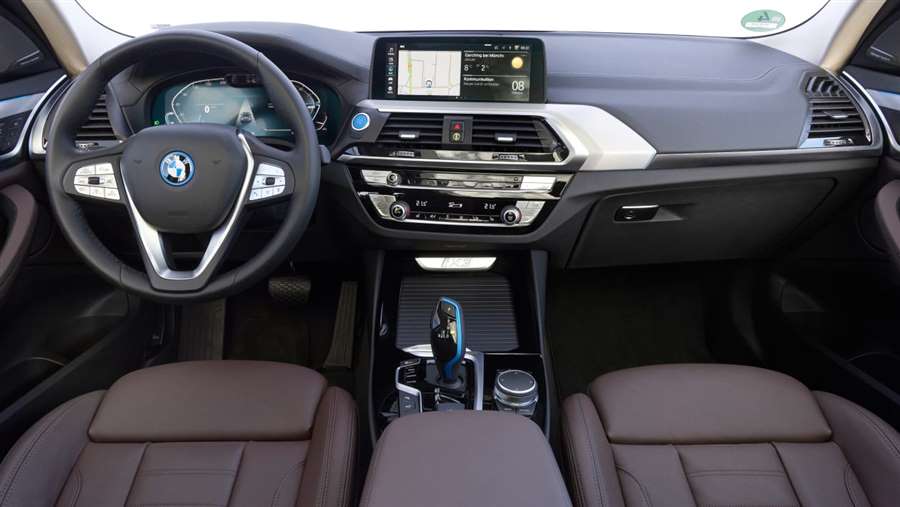
If you've sat in a BMW X3, there's very little change here apart from some blue flashes of colour for the BMW badge and gearlever. The steering wheel with silver buttons is new, while a 10.25-inch infotainment display and 12.3-inch digital instrument cluster is carried over, with Apple CarPlay and Android Auto.
Materials are of a high quality and the infotainment software is amongst the best in the business, but there aren't any novel features like trim made from recycled bottles or cork, as seen in many environmentally conscious models.
Equipment
The first versions of iX3 will be called Premier Edition and Premier Edition Pro, with four exterior colours offered, along with two choices of exterior trim colour: aluminium or gloss black. Standard kit includes wireless smartphone charging, heated front seats and Driving Assistant Professional.
Premier Edition Pro is distinguished by large 20-inch aerodynamic alloy wheels, along with a powered tailgate, adaptive suspension and a panoramic sunroof. It also boasts a plethora of tech like a head-up display, Harmon Kardon stereo, gesture recognition and a BMW IconicSounds Electric soundtrack developed with famous composer Hans Zimmer.
If there are concerns the iX3 is compromised compared with the regular model, fear not. It's virtually as usable for a family of five as the petrol or diesel car, and the boot is actually larger than the one in the plug-in hybrid BMW X3.
BMW X3 interior space & storage
There's plenty of space for adults in the front and back of the iX3 to stretch out, with the battery placed out of the way beneath the car's floor. In reality, most won't need the extra space found in the larger BMW X5 but there's no option of a third row of seats to make the iX3 into a seven seater.
Boot space
The iX3 has a 510-litre boot, which is 40 litres smaller than the petrol and diesel BMW X3 offer. In reality, most will be hard pressed to tell the difference, and surprisingly this is 60 litres more than the plug-in hybrid version of the X3 offers. The electric motor and transmission featured here is actually more compact than in the PHEV, so takes up less space.
Source: carbuyer.co.uk
2021 BMW M440i xDrive Noses Away From Its Roots
The M440i xDrive's spectacular inline-six can't quite make up for the rest of the car.
Traditionalists will say the new 4-series maintains only a passing resemblance to a BMW, like an unlicensed rendering in a video game. They'll also note the attention-snaring vertically oriented grille. But what's most disappointing is that it's not as good to drive as we'd expect a sporty BMW coupe to be.
The 4's redesign catches it up to the current G20-generation 3-series. Although the two cars share a 112.2-inch wheelbase, the coupe is an inch or two longer, wider, and lower and has a wider rear track. That growth brings a larger rear seat that's tolerable for average-size adults. In profile, the 4 looks almost like a scaled-down 8-series, yet unlike the 8, it doesn't look quite so much like a Ford Mustang.
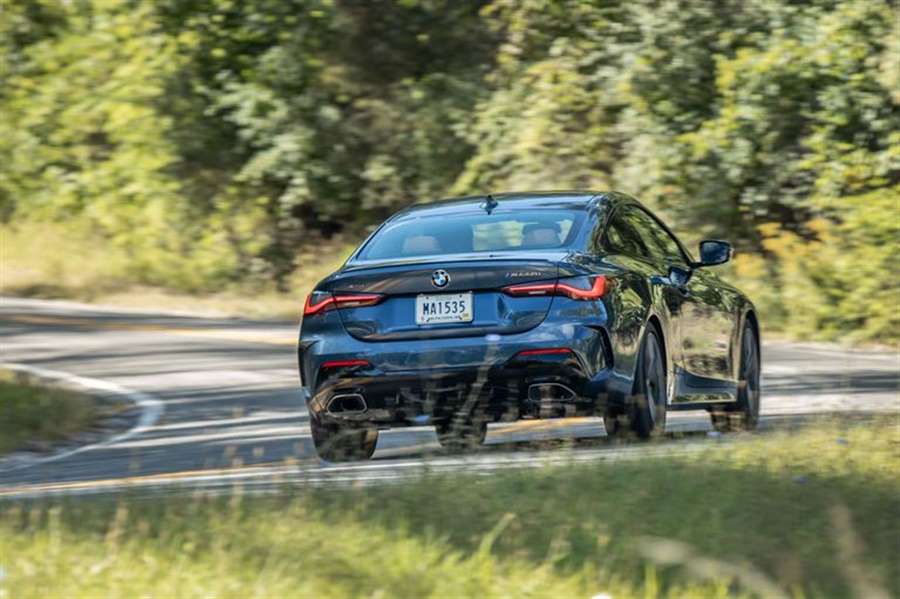
The update adds to the 4's curb weight. It's now basically a two-ton car in the top M440i xDrive trim, with our test car placing a substantial 53.8 percent of that mass on its front wheels. Even with 19-inch Michelin Pilot Sport 4S summer tires (18s with all-seasons are standard), it managed only 0.91 g of skidpad grip, and understeer dominates. We've recorded more stick from the newest 3-series and even some family sedans, although our car did stop from 70 mph in a short 149 feet.
The M440i's variable-ratio steering is short on tactility and has an almost rubbery buildup of force as you turn off-center. The rack's rather quick ratio only amplifies its artificial feel. Factor in the compliant ride from the adaptive dampers and the 4 has veered into grand-touring territory. It'll still happily hustle down a challenging road, but the experience isn't as satisfying as it used to be.
The M440i xDrive is still quick—3.8 seconds to 60 mph—thanks to the 382 horsepower from BMW's awesome turbo 3.0-liter inline-six. A new 48-volt motor-generator adds some pounds yet contributes up to 11 horses to assist the engine before the turbo wakes up. Lag is nicely mitigated as proven by the fleet 4.6-second time in our launch-free five-to-60-mph test. Sadly, a manual is no longer offered, but ZF's ubiquitous eight-speed automatic swaps gears as sweetly as ever.
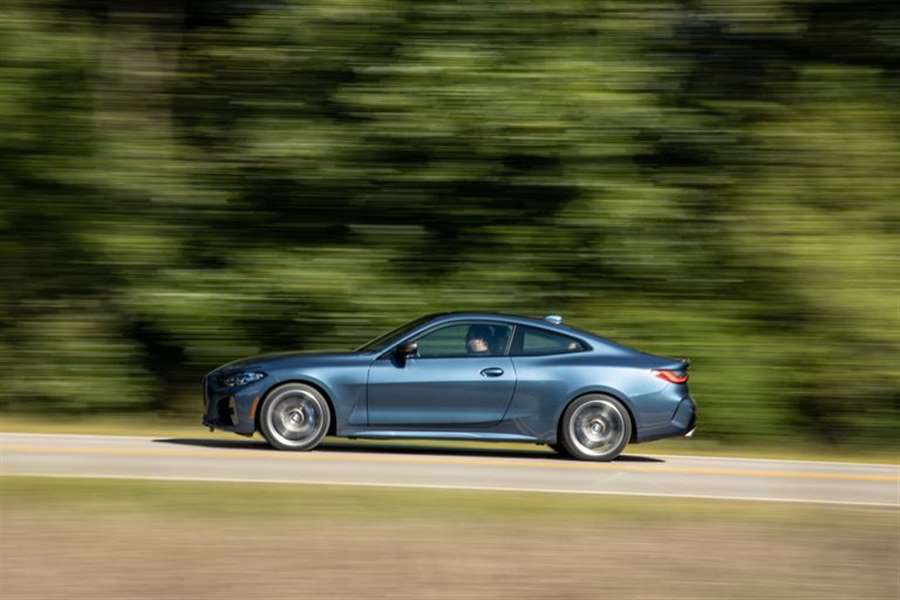
This being our first turn with the new 4, we're hoping other versions offer a closer connection. Our hope is the four-cylinder 430i model, which comes standard with non-variable steering and passive dampers, will carry the BMW dynamics torch of yore. It is currently the only 4-series available with rear-wheel drive, though a rear-drive six-cylinder model will be added later.
The fiery performance of the latest M3 and M4, both of which adopt similar vertical grilles, should help us acclimate to the controversial design. But the softer character of the M440i xDrive makes it tough to overlook the 4's new face.
Source: caranddriver.com
2021 BMW M440i First Test: Not Just a Two-Door 3 Series (PHOTOS)
It drives better than it looks but doesn’t justify those M badges. Is that a bad thing?
Mt. Baldy road is hardly more than an hour's drive from downtown Los Angeles, yet it evokes European alpine passes—those that lead from metropolises to epic vistas and crisp mountain air. Breaking off from the freeway, it crosses a quiet suburb before opening into long sweepers weaving up the hillside. In the final climb, it crinkles into tight switchbacks before terminating at a tiny rural ski resort. It's the type of road cars like the BMW M440i xDrive were made for.
No longer is the 4 Series simply a two-door 3 Series. As that iconic sedan preserves its dynamic focus, the 4 Series evolves and now offers a blend of luxury and performance once reserved for BMW's highest-end models. It's a balance that'll leave some drivers in bliss and others wanting more.
Is The M440i Quick? Yes...
Behind those atrocious oversized kidney grilles is a smooth, turbocharged 3.0-liter I-6 making 382 hp and 364 lb-ft of torque, sent through an eight-speed automatic to BMW's xDrive all-wheel drive system. It's a potent setup. Using the sportiest drive modes and a bit of pedal overlap, the M440i leaps to 60 mph in 4.0 seconds flat, and cuts the quarter mile in 12.6 seconds at 110.2 mph.
Acceleration is the most M-ish thing about this car—to 60, it's as quick as an X3 M Competition and not far off the pace of the last-gen M3. Yet the M440i's engine is just as happy to calmly loaf about as it is to rush to redline. All the while it revs with a sweet (but perhaps digitally enhanced) growl.
Swat the paddle shifters and gears change obediently, even if they aren't dual-clutch fast. Grab an upshift under heavy throttle, and the car replies with a nice little kick. Or, just leave it in automatic and cruise, letting its computers softly select the right gear.
M-emblazoned brake calipers clamp ventilated rotors for a 109-foot stop from 60 mph. That deceleration splits other performance-oriented BMWs; the M340i stops in 111 feet and the M2 Competition in 106 feet. The brakes feel reactive and provide a linear buildup of stopping power. But pedal stroke is long, making it hard to gauge how much of a press is needed to get the desired effect. The reactivity makes them a bit grabby at lower speeds, while the long stroke didn't inspire confidence when approaching those mountain hairpins.
With MotorTrend test boss Kim Reynolds at the wheel, the M440i posted a 24.7-second, 0.78g-average lap on the figure-eight course. On the skidpad, it stayed stuck up to 0.93 g. That's impressive when put into context against other sporty all-wheel-drive cars. The Quattro-packing Audi S4 lapped the figure-eight in 25.2 seconds at 0.75 g. The Mercedes C43 with AMG-ified 4Matic did the same in 24.8 seconds at 0.77 g. Both circled the skidpad at 0.91 g. After assessing the 4 Series, Reynolds called it a "very powerful car that's propelled fast to the next corner with modest tail-out drift exiting."
...But Is It Fun To Drive? Not Quite.
True as that may be on the test track, don't expect the xDrive system to provide tail-happy hijinks without serious provocation. Drivers with sub-Reynolds skill levels will find it feels as all-wheel drive as can be. On Mt. Baldy's switchbacks the M440i was extremely reluctant to rotate, instead rounding the bends with staid neutrality. Going to throttle early just brought understeer with overly cautious stability control intervention. On sweeping curves it provided superb high-speed composure but little excitement. And this was in Sport Plus mode, in a car equipped with the "ZTK" cooling and high-performance tire package.
Further undermining the numerous M badges is the paucity of steering feel. Like in the M8 Competition, the abject lack of sensation coming through the wheel results in a dilution of fun. It feels numb, insulated from whatever's going on under the front tires, not made better by its lightness and somewhat slow ratio. Sure, it's accurate, and the car goes where the driver wills it. But it's not quite agile, while the anesthetized sensations make grip levels vague. That mystical bond between driver and machine that BMWs were once known for simply isn't there.
Also lacking feel is the ride—but that could be a good thing, because here the M440i feels more like a grand tourer than a sport coupe. Whereas 3 Series models with M Sport suspension hammer their occupants over every road imperfection, the M440i rides comfortably, effectively erasing cracks and chatter, only ever slightly rough over large potholes. Although it's compliant and not floaty, more feeling through the suspension would give a better sense of connection to the road during spirited driving. Any other time? It's luxe.
Continent-cruising comfort persists in the cabin. The plush front seats feel like lounge chairs with side bolstering. In a real surprise the back seats are actually somewhat usable. There's a decent amount of space, and dedicated air vents, USB ports, and storage cubbies show that BMW didn't make the 4 Series' second row an afterthought. Faultless driver-assist technologies make highway driving a breeze.
Although the 12.3-inch digital gauge display isn't as customizable as equivalents from German competitors, BMW's latest iDrive revision is more user-friendly, and its 10.3-inch touchscreen is bright and clear. Crisp, thumping sound pours out of the optional 16-speaker Harman Kardon premium audio system. Material quality is high, although the layout is essentially identical to any other current BMW, a mere evolution from the previous 4 Series. A more inspired interior seems warranted for a car that makes such a daring design statement outside. Then again, perhaps the austere cabin offers a refuge from the sight of that egregious grille.
Is The M440i A Proper M Car?
There's no doubt that the M440i drives better than it looks. Understand, though, that it isn't a 3 Series coupe. Like the finest GT cars, the M440i is capable but distances its driver from the machinery underneath. It's powerful, poised, and easy to drive fast. Yet there's incredibly little sensation of speed, and the feelings of connection and involvement that true driver's cars offer are all but absent. Maybe the M4 will fix that.
Instead, the M440i feels more like a miniature 8 Series: a smooth, calm haven to cruise in that'll still indulge in full-throttle blasts. Like a proper grand tourer, it'll waft through town, tear across interstates, and oblige some corner carving—exactly as it did up Mt. Baldy road. Just don't be misled by all those M badges.
Source: motortrend.com
BMW M4 design study wears retro red (PHOTO)
The collaboration with N.Y. fashion house Kith is a one-off
BMW's M division has revealed a special 2021 M4 Competition coupe that is a collaboration with a New York-based fashion brand. The joint project with design house Kith has resulted in a unique M4 that is described as a design study.
The car is finished in Cinnabar Red, a factory color offering that was available on the original E30 M3. It was inspired by a Cinnabar Red E30 M3 belonging to Kith owner Ronnie Fieg. According to bmwblog, Fieg shipped his vintage M3 to Germany for a factory restoration. The work included custom elements featuring his company name on the roundels and badging.
The new M4 project is similarly co-branded. The M logo on the trunk lid is modified to read "Kith." The fashion company's name also appears on the custom seat upholstery. Aside from the custom design elements, the car appears to be a stock 2021 M4 Competition coupe. That means it's powered by an S58 twin-turbo straight-six making a mighty 503 horsepower and 479 lb-ft of torque.
As such, this M4 literally is one powerful promotional vehicle for the fashion brand. It's also a one-off. Still, BMW's M division is said to be interested in special projects with artists, so we could see more design collaborations involving M cars in the future.
Source: autoblog.com

